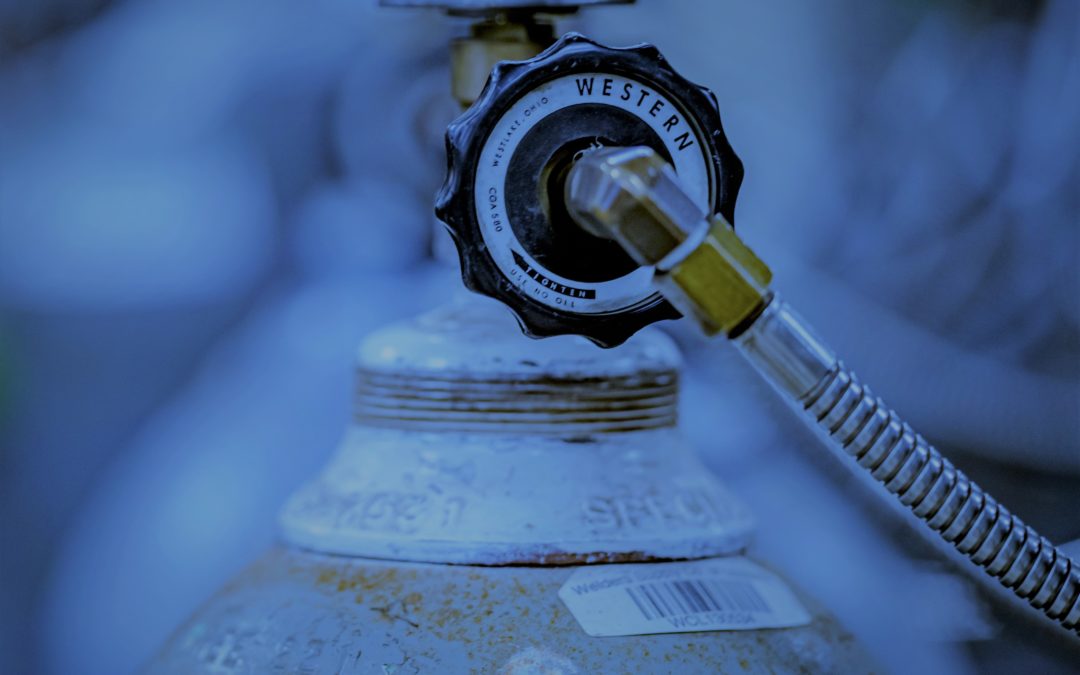Let’s take a look at some specialty gases:
- Laboratory Gases
- Calibration Gases
- Clinical Gases
- Laser Mixtures
- EPA Protocols
- Emission Gases
- Research Gases
- High Purity Regulations Equipment
Pure Gases
Pure gases are those that are composed of a single gas type. In some cases, they can be made from the very highest grades available to ensure no impurities make their way into the mixture. These cylinders are then tested for specific elements based on the application such as trace hydrocarbons, oxygen and moisture to ensure the highest quality product possible.
Argon – Argon is the 3rd most abundant gas in the earth’s atmosphere. It acts as a shielding gas for arc welding, alloy welding, and heat treating. Also used in medical and food processing.
Hydrogen – Hydrogen is the lightest element. It is used in fuel cells to generate electricity, power and heat, and in stainless steel welding.
Carbon Dioxide — Commonly used in the food/beverage industry to put the carbonation in your soft drinks, Co2 is a colorless, odorless, non-reactive gas. The Co2 also helps to keep drinks fresh, preventing the growth of bacteria in the stored liquid.
Helium — Colorless, odorless, and non-toxic, helium is the most abundant element in the observable universe. You might first associate helium with balloons, but it has many other uses. It is used in the medical, technology, and manufacturing fields. Would you be surprised to learn the tiny microchips in your cell phone are processed with helium?
Propane – Propane is commonly used in industrial and home use, as well as low-emissions public transportation. It also provides fuel for forklifts, heating and cooking in campers, and barbecue grills.
Nitrogen – Prevalent in the universe, nitrogen has many different applications from manufacturing steel, enhances plasma cutting, food preservation, and pressurization of commercial beverage systems.
Mixed Gases
Mixed gases are used across a vast number of industries and can be comprised of two gas components, or even 6 or more components depending upon the application and customer specific requirements.
There are several grades of mixtures:
PRIMARY STANDARD GRADE — precisely blended mixtures using the most advanced gravimetric
techniques, resulting in the highest accuracy of gas mixtures available. NIST traceable weights are used to calibrate the high precision scales.
CERTIFIED STANDARD – calibration gases prepared with high-accuracy gas blending systems, using gravimetric or partial pressure methods. They are then analyzed against Primary Reference Standards, the results of which are reported on the Certificate of Analysis (COA).
CUSTOM MIXTURES – process gas standards that are prepared in the same fashion, and to the same specifications as the Certified Standards, but the analysis is not reported. The requested composition is reported on the label.
ENVIRONMENTAL MIXTURES – high accuracy reference gas mixtures used for the calibration of emission monitoring equipment. These mixtures are manufactured to stringent EPA specifications and procedures to maximize stability and shelf life. NIST traceable Reference Materials are used to certify these mixtures.
AVAILABLE ANALYSES
Component Analysis – the determination of the concentration of each minor component in the requested mixture – Results reported on the COA.
Specific Impurity Analysis – determination of the concentration of a specific impurity of concern. – Results reported on the COA.
We can prepare a wide variety and quantity of gases. There may be restrictions in the preparation of some mixtures. For example:
– Components that chemically react, even under limited conditions, will not be mixed together. Mixtures of fuels and oxidizers are given special consideration. Limits are determined by the fuel’s lower explosive limit in an oxidizer, as well as the potential energy contained in the mixture.
– If a requested mixture contains a liquified gas, such as propane, the final pressure of the mixture may be limited to prevent condensation of the component in the cylinder. Condensation of a component would result in separation of the component and the mixture would not be stable.
MIXTURE SPECIFICATIONS:
There are two considerations used to determine the mixture grade required, the Mixture Preparation Tolerance and the Analytical Certification Tolerance.
Mixture Preparation Tolerance is the variation of a component from the requested concentration. Tighter tolerance requirements such as in the Aerospace or Electronics industries require Primary Standard grade mixtures. Other requirements, such as process monitoring operations can use the Custom Grade gas mixtures, where only the requested concentration is reported on the label. Whatever your gas requirements may be, you can be assured that our technicians will use the proper care and techniques in the manufacture of your mixture.
Analytical Certification Tolerance is the term used to indicate the level of certainty of an analysis. Any analytical measurement has a small amount of acceptable variation in the results. The higher accuracy methods of analysis have less variation. The Primary Standard Grade has the highest accuracy and the certainty is within ± 200 PPM for components greater than 2.0%.
Did you know? Welders Supply manufactures and packages specialty gas mixtures. Contact us with any questions!



